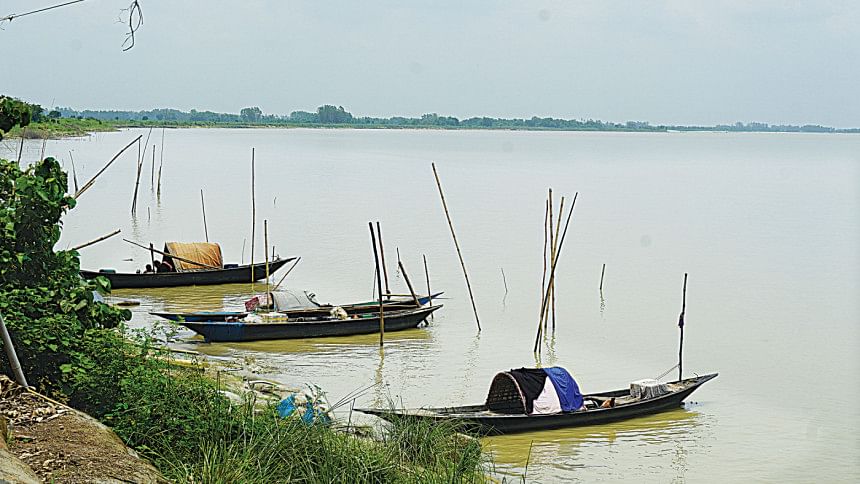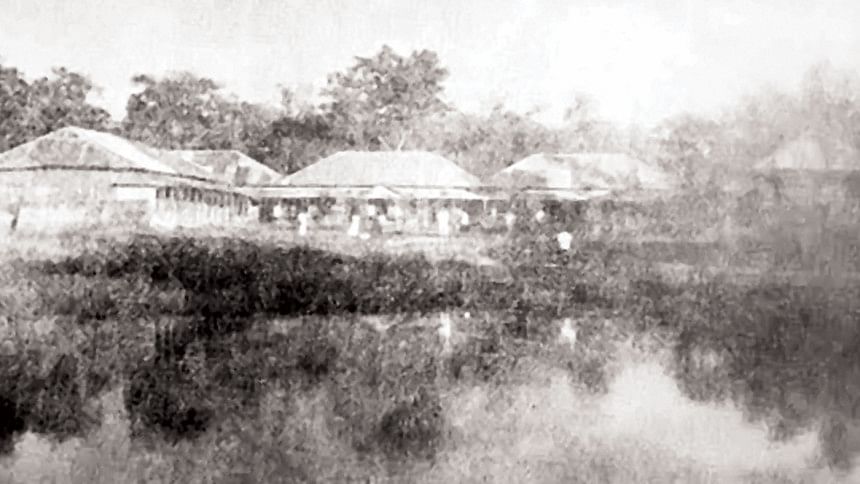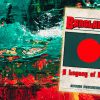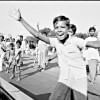Regional Resistance: Halim Bahini of Manikganj

During the 1971 Liberation War, dozens of regional forces emerged across Bangladesh. Just as the freedom fighters trained under the sub-sectors and the Bengal Regiment fought valiantly, these regional forces also put up tough resistance against the Pakistan army. In the month of victory, we bring you the stories of some of these heroic forces.
Through swift mobilisation, strategic brilliance, and devastating attacks against the Pakistani army, the Halim Bahini of Manikganj distinguished itself as one of the most effective regional forces that fought in the Liberation War.
Immediately after the March 25 massacre, Abdul Halim Chowdhury, a retired captain of the Pakistan Army, wasted no time and began forming the force, training recruits, and overseeing the overall war effort in the region.
The force's comprehensive recruitment campaign allowed it to eventually grow to about 2,000 freedom fighters strong.
According to the book "Bangladesher Swadhinota Juddho - Sector Bhittik Itihash (Sector-2)", the Halim

Bahini was spread over an area of about 800 sq km, which covered 22 upazilas, including Sadar, Singair, Ghior, Shibaloy, Daulatpur, and Harirampur in Manikganj; Dohar, Nawabganj, Dhamrai, and Savar in Dhaka; and Sreenagar in Munshiganj.
In June this year, The Daily Star spoke to over 50 freedom fighters of Halim Bahini during a visit to five upazilas of Manikganj and two upazilas of Dhaka.
ARMS AND TRAINING
On March 27, a group of freedom fighters led by Abdul Halim raided the Manikganj treasury, looting a number of rifles and a large cache of ammunition.
Speaking to this newspaper, freedom fighter Awlad Hossain said later that day, a meeting was held in Shibaloy, chaired by Abdur Rouf Khan, director of operations, where it was decided to set up training centres in every union of the upazila. The initial training began in Manikganj town using weapons looted from the treasury.
On April 8, when Pakistani troops entered Manikganj town, Abdul Halim divided his arsenal and dispatched 26 rifles and 200 bullets to arm the unit to be led by Matin Chowdhury, associate director (general), in Azimnagar.
From the first week of April, training of freedom fighters commenced in Manikganj's Sadar, Shibalaya, Ghior, Harirampur, and Singair under the supervision of the Halim Bahini.
In the second week of April, the Halim Bahini established its headquarters on the banks of the Padma in Harirampur.

FIRST OF BATTLES
In mid-May, the Pakistani army, aided by Razakars, set up a camp in Harina, Harirampur, triggering a series of battles between the Halim Bahini and the Pakistani forces across Manikganj.
According to the book, the Halim Bahini engaged in over 40 battles against the Pakistani forces, inflicting heavy casualties on Pakistani soldiers and Razakars.
One of the most notable battles fought by the Halim Bahini against the Pakistanis was the Charigaon Launch Ghat operation in Singair on June 17.
On June 17, freedom fighters, led by unit commander Tabarak Hossain, ambushed two Pakistani launches at Charigaon, located on the banks of the Kaliganga River in Singair.
Yakub Hossain, a freedom fighter who participated in the battle, said, "The two launches, unaware of our ambush, were easy targets. Our attack was swift and decisive, resulting in the deaths of around a dozen soldiers on board.
"We then looted the launches of their arms and ammunition before sinking them in the river."
The Halim Bahini also attacked multiple enemy vessels on the Dhaleshwari and Padma rivers.
In September, a group of eight freedom fighters, led by Abdul Halim, attacked a Pakistani launch on the Padma near Harirampur, resulting in the deaths of 11 Pakistani soldiers and 3 Razakars.
The freedom fighters later recovered a significant amount of arms and ammunition from the launch, said Khandaker Abdul Baten, who took part in the attack.
HALIM'S INDIA TRIP
As the series of battles against the Pakistani army continued, the Halim Bahini's ammunition supply dwindled.
In September, Abdul Halim travelled to Melaghar in Tripura, India, to seek additional arms support. During his visit, he met with Sector 2 Commander Major Khaled Mosharraf, according to the book.
He would go on to stay in India for two months and return in November with additional fighters.
In his absence, Abdul Matin, associate director, Abdur Rouf, director of operations, and Awlad Hossain, additional director, conducted the operations.
TURNING POINT
October marked a turning point, with the Halim Bahini dealing heavy blows on the Pakistani forces in various parts of Manikganj.
On October 13, the Halim Bahini launched a fierce attack on the Pakistani army's Harina camp in Harirampur. Freedom fighters, along with Baloch soldiers who deserted the Pakistan army, successfully captured the camp.
Awlad Hossain said, "Four Baloch soldiers, enraged at the Pakistani army's transgressions, reached out to us to join our cause.
"On October 13, we encircled the Pakistani camp and launched an attack. The assault resulted in the deaths of 53 Pakistani soldiers."
Freedom fighter Mahfuzur Rahman Khan was seriously injured in a grenade attack by the Pakistanis during the battle. He died on October 15.
The most devastating defeat inflicted on the Pakistani army by Halim Bahini was the Battle of Golaidanga in Singair on October 28, when 82 Pakistani soldiers were killed without any casualties to the freedom fighters.
Acting on a tip-off that a group of Pakistani soldiers on 10-12 boats was approaching their camp at Golaidanga School, Tabarak Hossain quickly led the freedom fighters in setting an ambush.
The Pakistani soldiers entered the school grounds and found it to be void of freedom fighters. As they began heading back to their boats, the freedom fighters, hiding in plain sight, swooped on them.
Freedom fighter Lokman Hossain said, "There were only 30 of us. Armed with few weapons, we forced the Pakistani soldiers into the muddy waters. We scattered their force, which was more than twice our size. The bravery displayed by our forces was broadcast by Swadhin Bangla Betar Kendra."
Among other battles fought by Halim Bahini are the battle of Baira village in July, the battle of Machain Bazar on July 18, the ambush at Maluchi village on August 9, the battle of Narchi and Kustagram in Ghior on November 28, and the battle of Daskandi village in Shibalay on December 8.
RETURN OF FORCE CHIEF
The book reads that after spending two months in India procuring weapons, Captain Halim was appointed regional commander of 22 upazilas across Dhaka, Manikganj, and Munshiganj in November.
In the third week of November, Captain Halim returned to Bangladesh with a sizable force and weaponry. The freedom fighters under his command fought valiantly on the battlefield until the ultimate victory.
COMMAND STRUCTURE
According to its members, the Halim Bahini was organised into three units. Rouf Khan led the forces operating in the Harirampur-Shibalaya-Ghior-Daulatpur area. Tabarak Hossain Ludu commanded the forces in the Singair-Manikganj-Saturia and Savar areas. Sirajuddin led the unit operating in the Nawabganj-Dohar-Keraniganj region of Dhaka.
Initially, the Halim Bahini consisted of four companies. However, after the martyrdom of freedom fighter Mahfuz in October, a fifth company, named the Mahfuz Company, was formed in his honour. The company commanders were Abdur Razzak (Alpha Company), Abul Bashar (Bravo Company), Mainuddin Chowdhury/Sipahi Abdul Hakim (Charlie Company), Abul Khalek (Delta Company), and Rezaur Rahman (Mahfuz Company).
The Halim Bahini's achievements during the Liberation War were made possible by the support of the local people. "We couldn't have done anything without the help of the local villagers," said Awlad Hossain. "We relied on donations from affluent community members to fund our operations. Moreover, the villagers provided us with food and shelter all the time."
Translated and edited from Bangla by Subrata Roy.

 For all latest news, follow The Daily Star's Google News channel.
For all latest news, follow The Daily Star's Google News channel. 








Comments